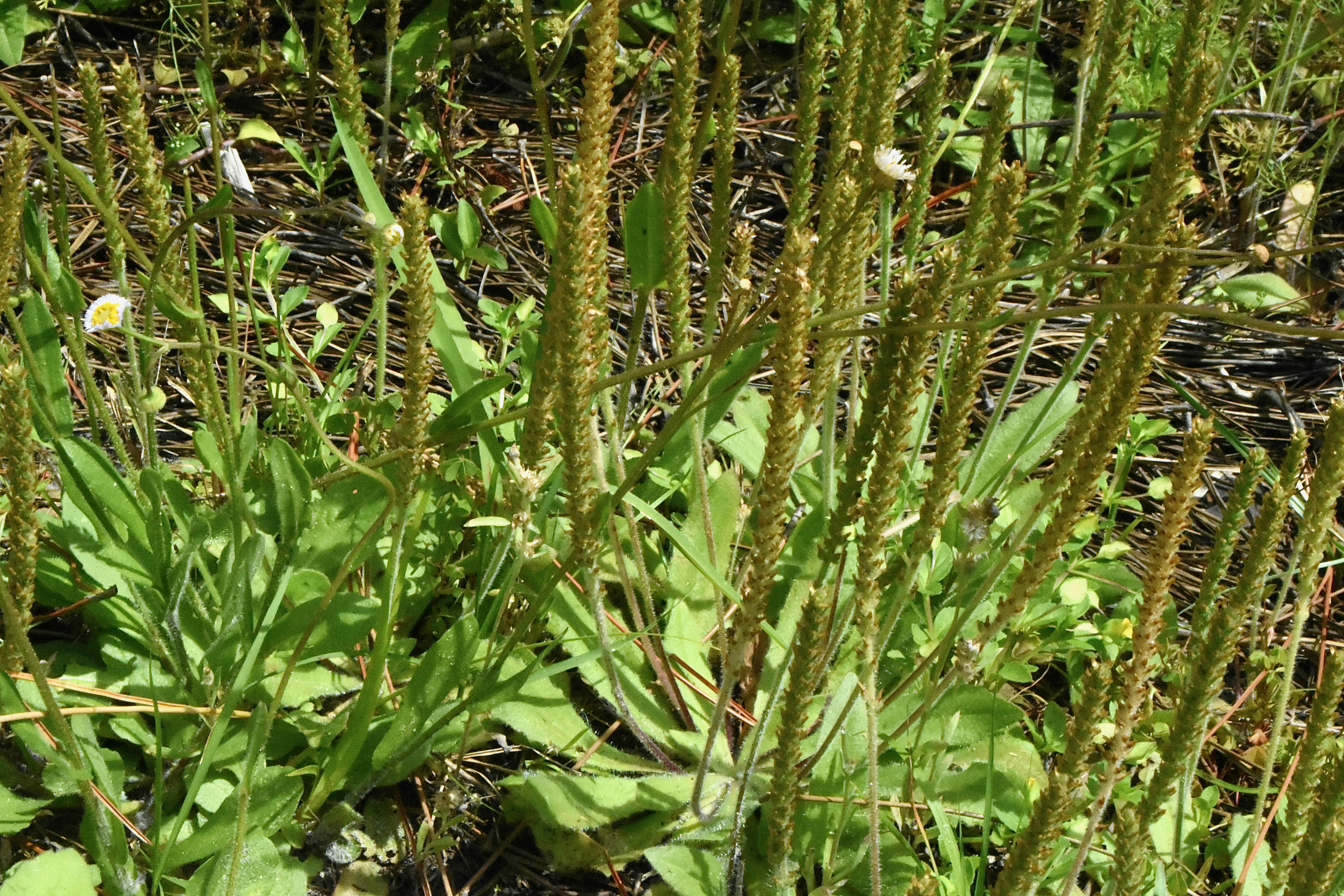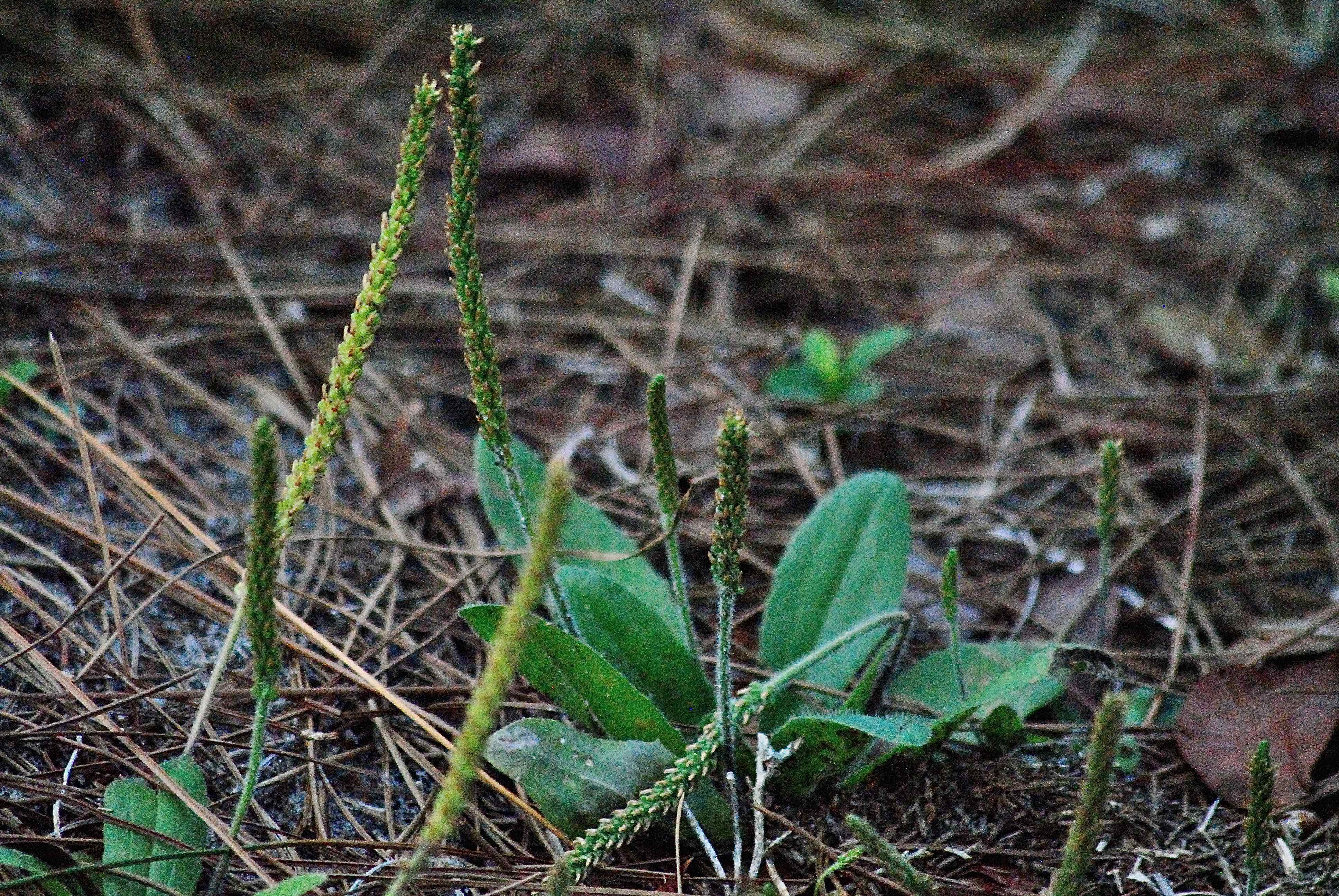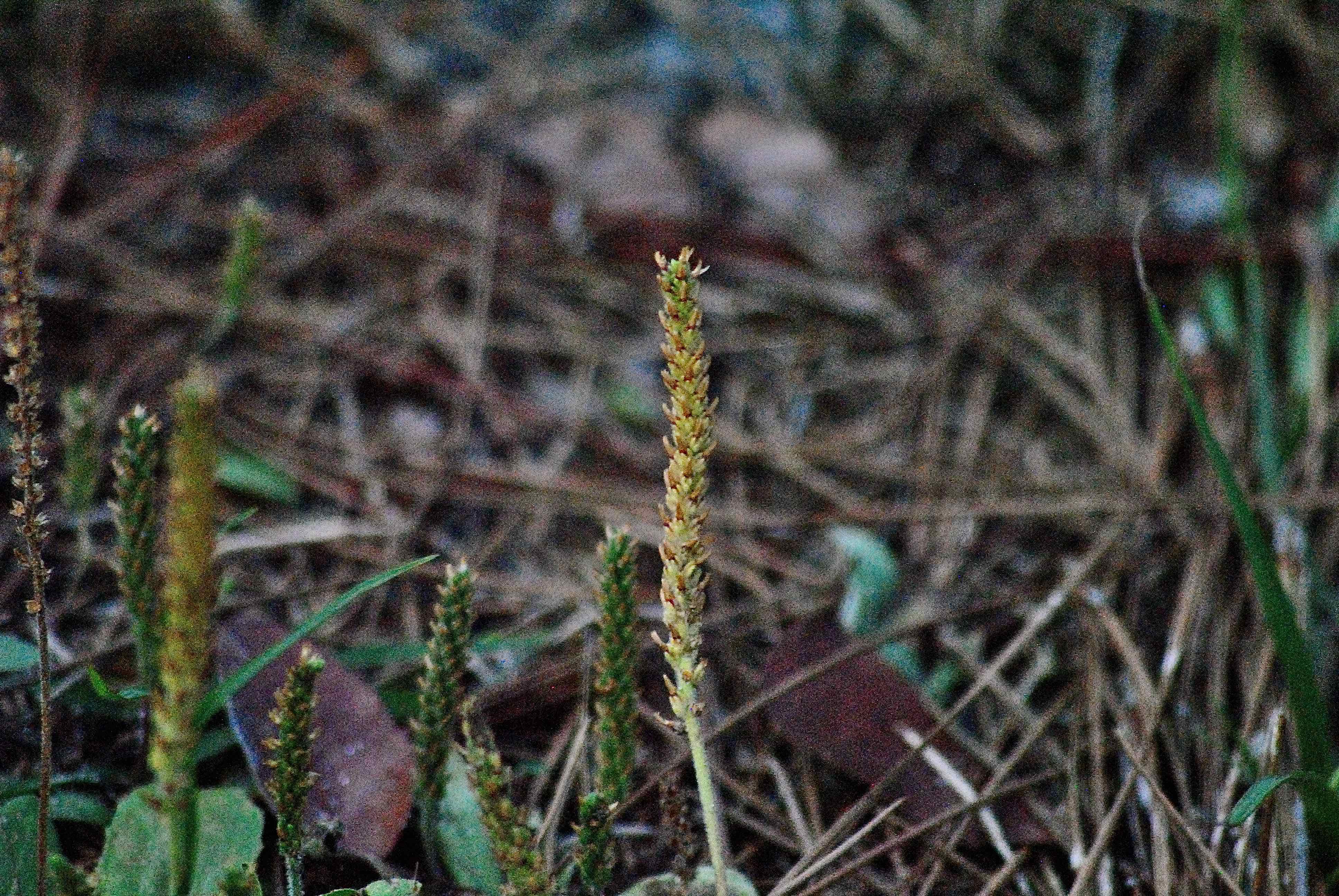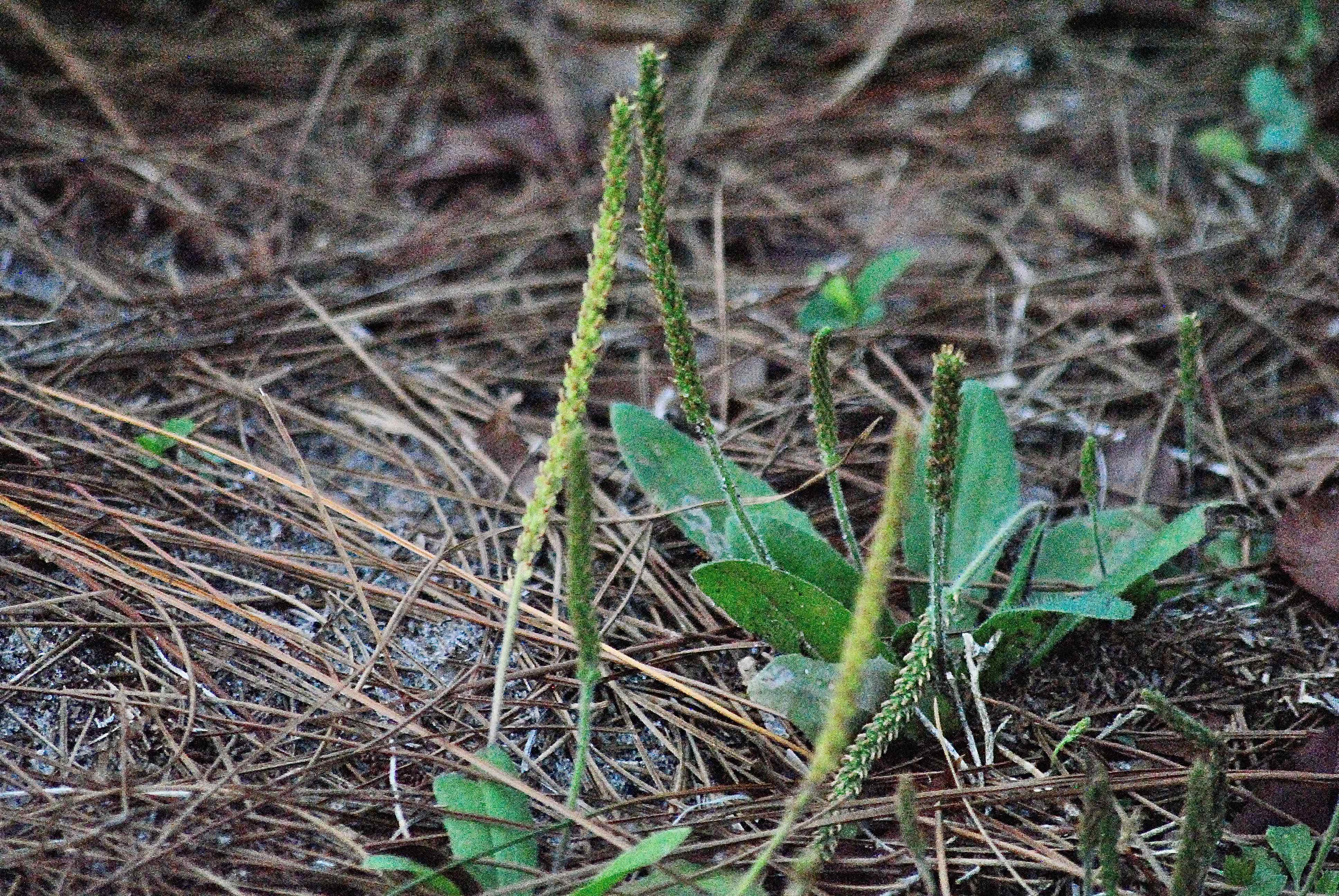
Virginia plantain, photographed at Loxahatchee Slough Natural Area, Palm Beach Gardens, Palm Beach County, in April 2022.
Virginia plantain, Plantago virginica, might look like just another lawn weed, but it does actually have some useful properties. For one, it's an astringent. Secondly, its edible. Thirdly, it can be made into a cool little wreath. But more on those points later.
Virginia plantain is native to Florida, found in almost every county in the state. It's also native to most of the eastern United States — Vermont and New Hampshire are exceptions — the Great Plains, the Southwest and the Pacific Coast as far north as Oregon. Connecticut lists Virginia plantain, known locally as hoary plantain, as of special concern.
It's also found in Mexico and naturalized in Ontario, Central America and the Caribbean. Virginia plantain has managed to cross the Pacific and gained a foothold in Japan, China and Korea and crossed the Atlantic and found a home in Europe. In Taiwan, it's considered an invasive.
It's a low-lying plant, the leaves forming a rosette from which a flower spike emerges. The flowers themselves are tiny, but the spike itself can be six inches long.
The leaves are long and narrow compared with other plantain species, particularly common plantain, an import that is found throughout North America. The leaves of Virginia plantain are covered with fine hairs, giving them a gray-green appearance. The edge of the leaves are also slightly toothed. It is a sun-loving plant, found in open fields, old pastures and possibly your lawn. It is an annual, flowering in spring and producing seeds in summer.
As we noted above, Virginia plantain is edible, as are all plantains. According to Eat the Weeds, young leaves can be used raw in a salad or cooked in soups. The seeds can be eaten as well.
There are several 19th century references that Virginia plantain is medicinally useful as an astringent, or as an agent to stop minor bleeding, and to treat skin ailments like boils. There are some 21st century references that it might be useful in treating certain blood diseases, including "lymphoproliferative disorders," such as lymphomas and leukemias.
Virginia plantain also has been used ceremonially as well. The Kiowa made wreaths from it that old men would wear during certain dances as a symbol of their good health. It is a minor source of food for mammals and birds.
Virginia plantain is a member of Plantaginaceae, the plantain family. Other common names include southern plantain, hoary plantain, dwarf plantain, paleseed plantain and paleseed Indian wheat.
Loxahatchee Slough Natural Area



